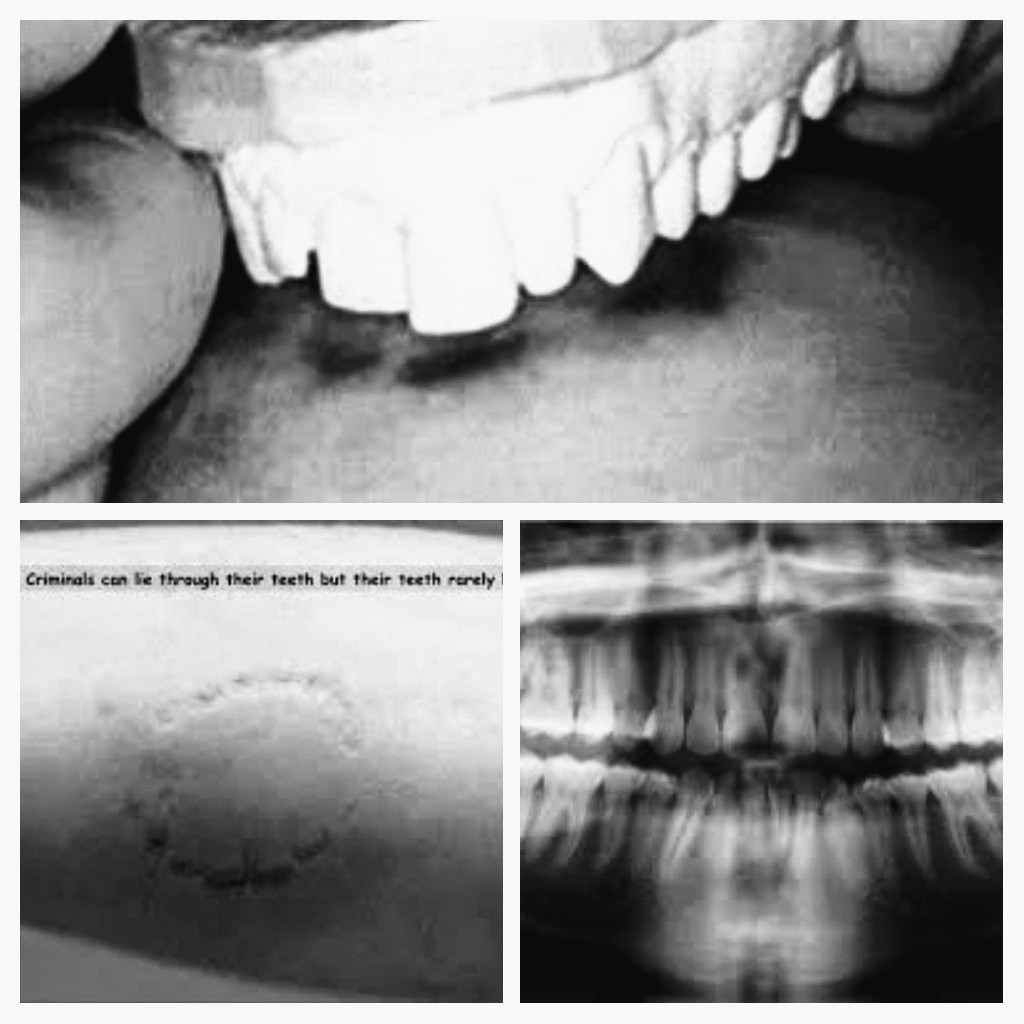Bulletin Board

When Bitemarks were the Strongest Evidence in the Trial of a Serial Killer!
Forensic Dentistry or Forensic Odontology whose origin dates back to Garden of Eden ironically is still in seminal stages especially in developing countries like India [1]. While investigating crime, often valuable evidences related to teeth; which might play a vital role in solving crime, are ignored. Teeth along with bones are considered to be the most durable organs in vertebrates and can resist decomposition even if the body is burnt, submerged or buried. Therefore, dentistry/odontology can contribute a lot in detection of crime and hence seeking justice [2]. One of the prime aspects of Forensic Odontology is Bitemark analysis. A Forensic Odontologist should be consulted to analyze Bitemarks found on bodies of victims. Bitemarks can act as corroborative evidence in crime cases. Sadly out of 200 cases in India; between 1400 AD to the year 2017, related to Forensic Odontology, only 2% were successfully solved [3]. One of the most well known cases to be solved with the help of Bitemarks in the world was the execution of Ted Bundy (1989). Bundy may have gotten away with two murders and rape of a woman, if he hadn't bit the victims [4].
On the night of January 15, 1978, Lisa Levy and Martha Bowman, two young girls were found dead. Lisa Levy was raped, strangled and beaten on the head. Margaret Bowman was strangled with a pair of pantyhose and severely beaten on the head. Neither was found to be struggling. No solid evidences were found as the room was wiped clean, and there was no weapon found at the crime scene either [4]. The trace evidences found on the scene like: blood and semen samples were inconclusive. Only strong potential evidence found was a peculiar Bitemark on the left buttock of Lisa Levy. The Bitemark was photographed by police officers. Ted bundy was the prime suspect in these two murders, therefore all his teeth were carefully photographed, and impressions were taken and matched with those found on the victim’s body. The Bitemark left on the victim was easily distinguishable. Bundy’s Anterior teeth had unique characteristics, such as: chipping on teeth and misalignment of anterior teeth, including sharp bicuspid teeth. The same matched completely with the Bitemark left on Lisa Levy’s body [4]. It was due to this Bitemark that Bundy was proven guilty during trial and charged with murder [4].
Further details on the case can be viewed on the following link: https://sites.google.com/site/tedbundythelastbitemark/the-famous-bitemark-case [4].
References:
1. N. Balachander, N. Aravindha Babu, Sudha Jimson, C. Priyadharsini, and K.M.K Masthan. Evolution of Forensic Odontology: An Overview.
2. Ramasamy C., Dentistry’s Cardinal Role in Forensic Odontology’, Iranian J. Public Health, 2014; 43: 1152-3.
3. Sansare, K. Forensic Odontology. Historical restorations to changes brought about by environmental perspective. Indian J Dent Res 1995; 6:55.
4. Ted Bundy-The Final Bitemark. Available Online at - https://sites.google.com/site/tedbundythelastbitemark/the-famous-bitemark-case . Last Accessed: 19/05/2019.
Copyright © 2025 IIFSS | Design & Developed By Web Mingo